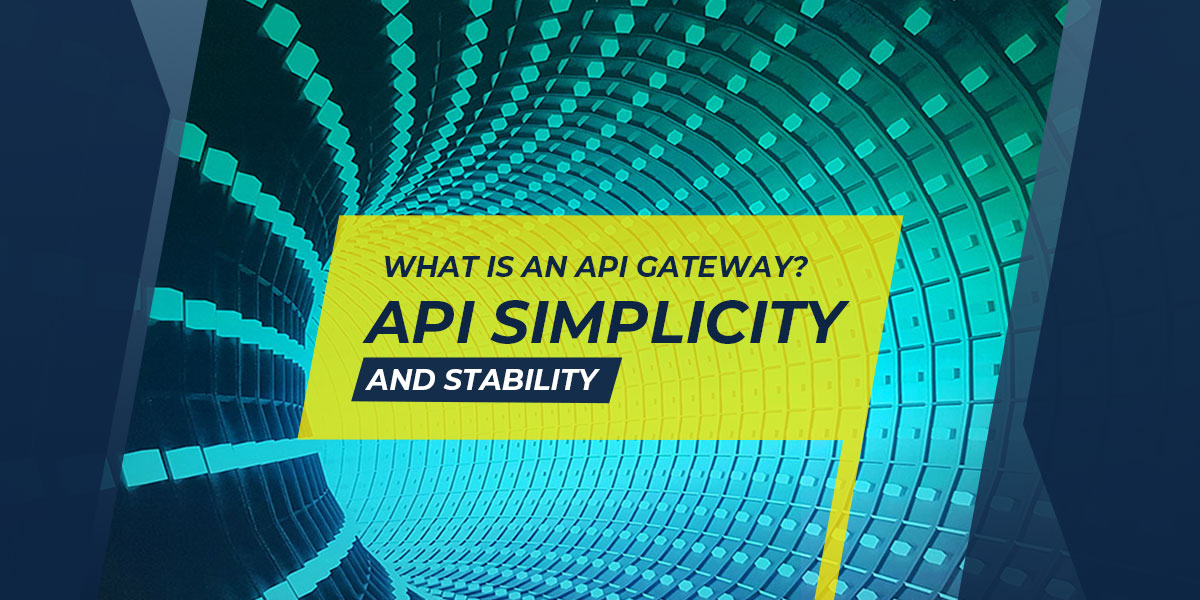What is an API gateway? API simplicity and stability

Deep learning and machine learning specialist, well-versed with experience in Cloud infrastructure, Block-chain technologies and Big Data solutions.
May 7, 2021
API Gateway
API gateway is the software patterning that sits in front of an application programming interface (API) and is the single-entry point for defined back-end APIs and microservices which can be both internal and external to facilitate requests and deliver data and services. It is the answer to a major outcome of the microservices architecture style: the proliferation of services and their interfaces. The core intention of an API gateway is to simplify and stabilize the interfaces revealed to clients.
An API gateway behaves as a reverse proxy to approve all application programming interface (API) calls, aggregate the various services expected to fulfill them, and return the appropriate finding. Most enterprise APIs are deployed through API gateways. It's natural for API gateways to deal with common tasks that are used across a system of API services, such as user authentication, rate limiting, and statistics. These extensive capabilities make the API gateway a crucial piece of an enterprise API strategy.
In addition to this, because of the distinct role of an API gateway in the architecture, numerous add-on functions are enabled, like monitoring, logging, security, load balancing, and manipulation of traffic. It is identical to the Facade design pattern but applied at the network level. The objective in both issues is to provide a simplified interface profile that hides the complexity of the system.

Simplified Interfaces
An API gateway may be more sophisticated, acts to decouple clients from the services, and procure a single point of connection for inbound and outbound traffic.
This sort of capability needs orchestration at the architectural level and has implications for other microservices elements like circuit breakers and service meshes.
A microservice back end may comprise various interacting services, and these services may be heterogeneous to their URLs and protocols. An API gateway can give a streamlined interface for clients to interact with. In a sense, this functions like a simplification proxy.
API Stability
An API gateway can increase the stability of the API that clients interact with as development proceeds on services. The gateway can smooth over subtle changes that might otherwise break clients or compel them to change, and developers can use the gateway to direct some of the traffic to modern versions of services to test them.
In general, an API gateway provides a single point of contact for clients that enables them to minimize the effects of changes to the back-end services. The more complicated the services, and the more frequently they change, the more efficient the capabilities of the gateway become.
An API gateway can also operate to simplify API surface area even for internal clients. That is, a gateway can be utilized to make the topology within a microservices architecture and it is easier to manage.
Monitoring
An API gateway function within the structure and makes it ideally positioned for some sorts of monitoring, alerting, and tracing. Similarly, gathering statistics on the gateway is beneficial for a wide range of traffic and usage analysis.
Charging and Limiting
When API utilization is pay-for-use, then an API gateway is the perfect place to obtain price limits or track rates, or monitor fees. Monitoring buyer and API utilization from a single level are way easier than instrumenting different services to achieve the same effect.
Security
As the entry point to the application, API gateways are ideally placed to maintain incoming requests and safeguard the system. It can survive the brunt of system hardening. This is comparable to the role of a jump host in systems administration best practices.
The services are then prepared to concern themselves primarily securing their communication with the single API gateway, a much simpler proposition than handling with multiple public-facing APIs.
Implementing authentication and authorization at the gateway can avoid malicious actors from gaining access to the services while throttling the number of requests and maintaining whitelists and/or blacklists lowers the risk of distributed denial of service attacks. The API gateway can also oversee the encryption of communications between clients and within the system.
Applying security at the gateway not only reduces the potential attack surface but also guarantees that policies are applied consistently and efficiently. In a microservices architecture, centralized management is more productive than expecting the same functionality to be enforced for each service, potentially using various languages and frameworks.
The above applies to infrastructure-level security and however, as gateway also takes on the work of authentication and authorization at the business level, this employs orchestration with the back-end services incorporated but can simplify things by focussing security logic in a single place. This typically ties into rate-limiting or pay-for-use, as the gateway will have the client accounts to expend for billing.
Managing APIs
An API proxy routes requests and responses, whereas an API gateway offers additional functionality overseeing the incoming and outgoing traffic. A gateway can also deal with service discovery and load balancing of requests across multiple backend instances. In the case of monetized APIs – where clients spend based on the number and/or frequency of requests – a gateway can manage rate-limiting for many clients.
An API gateway can stimulate the process of releasing new functionality to production with canary releases. The gateway routes a specified proportion of incoming requests to a new version of a service, enabling the team accountable to monitor for issues while limiting the effect of any failures. Once the team is convinced, traffic is switched over to the new version. Configuration of the gateway is naturally managed through policies applied via a command-line interface or admin API, with some gateways also offering a management GUI.
API Gateway Solutions
API gateway options fall into two wide categories: managed and roll-your-own. In the realm of managed solutions, each cloud vendor gives a product. These can be noticed by searching as they are titled along the lines of “Amazon API Gateway, “Azure Application Gateway,” and “Google Cloud API Gateway.”
Considerations when choosing an API gateway
It's significant to understand what a gateway doesn't do. In a system built around microservices, each request appearing via the gateway must be routed to the relevant service. The gateway can only route those requests if a network and communication technique between backend services already prevails. Selecting between synchronous or asynchronous communications and implementing this per service or use a service mesh is a vital part of the system design, but it is distinct from the choice of an API gateway.
When choosing an API gateway, it is critical to consider both architecture and the deployment environment. Some API gateways are designed for a specific environment, whereas others furnish the flexibility to evolve with the application.
By design, adding an API gateway to the system puts in another hop to all incoming and outgoing traffic. Performance is therefore a key consideration when choosing a gateway for a system. Not all gateways are developed equal, and the additional latency from sending requests via a gateway can have a noticeable effect on the end-user. On the other hand, some gateways allow tracking requests and response times. That performance data can not only help to optimize the system but can also provide a reminder when something is not working as intended.
API gateway in practice
As the single ingress and egress point for a system, a gateway requires secure access to the system. Ensuring users are authenticated and requests authorized before they get through, applying transformations to assure the necessary data is included in the responses, and rate-limiting and throttling traffic can all be implemented at the gateway.
Being the single entry point to the system, it shouldn't imply that a gateway is a single point of failure. A robust and reliable design is a good start, but depending on the uptime requirements for the system, it may be essential in implementing a high availability cluster of API gateways. While some gateways require the data store to be replicated for each instance, increasing the overall cost, others aid both single and multi-database implementations.
As the traffic flow through the gateway, it is the perfect vantage point for monitoring traffic and examining the behavior of the system. Choosing a gateway that collects metrics, supports logging, and tracing, and provides dashboards for analyzing trends can give greater insight into the system and allow to react shortly to issues as soon as symptoms appear.
Real API Gateway
It is critical to constantly keep the trade-offs in mind. Gateways are another part of the infrastructure that wants maintenance. Specifically, the API gateway needs to keep changes and synchronization to the backend and client. However, API gateways can be the best outcome to benefit from architectural complexity or business cases. If the architectural complexity or business case deserves it, an API gateway can be the perfect solution.
Conclusion
API gateways contribute a consistent interface for clients to interact with the system and a central point for handling requests and responses. In a microservices architecture, they can be adopted to implement functionality that would otherwise have to be replicated across each service and can assist smooth the transition from a monolithic design to loosely coupled services.
Adding an API gateway to the system comes with many benefits, but it also adds another component to configure and maintain, to confirm it's being used effectively. When choosing a gateway, consider the system's needs both now and in the future; a high-performance, low latency gateway with the choice to expand the functionality as the system develops will ensure value without putting in excess weight to the system.













